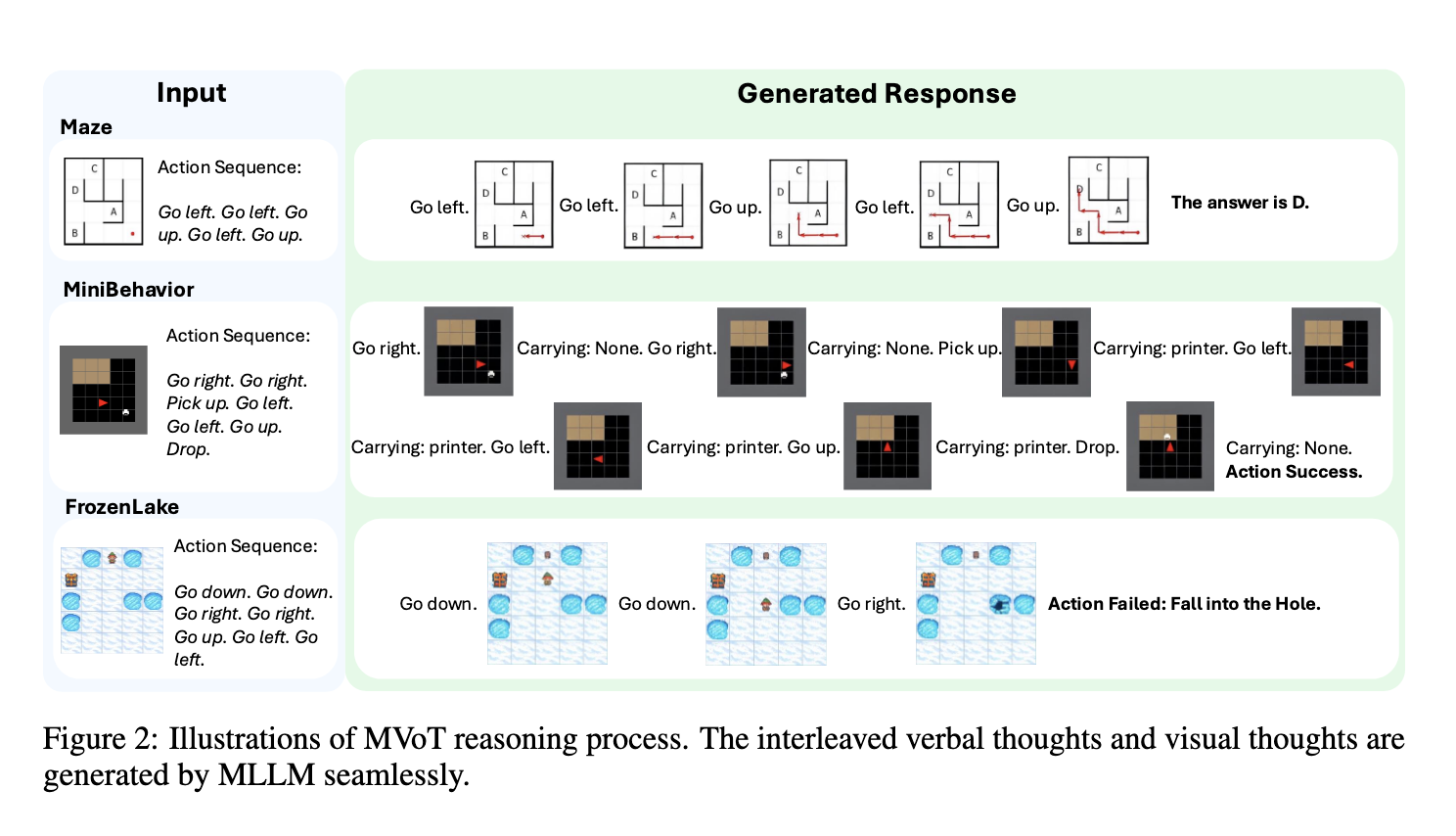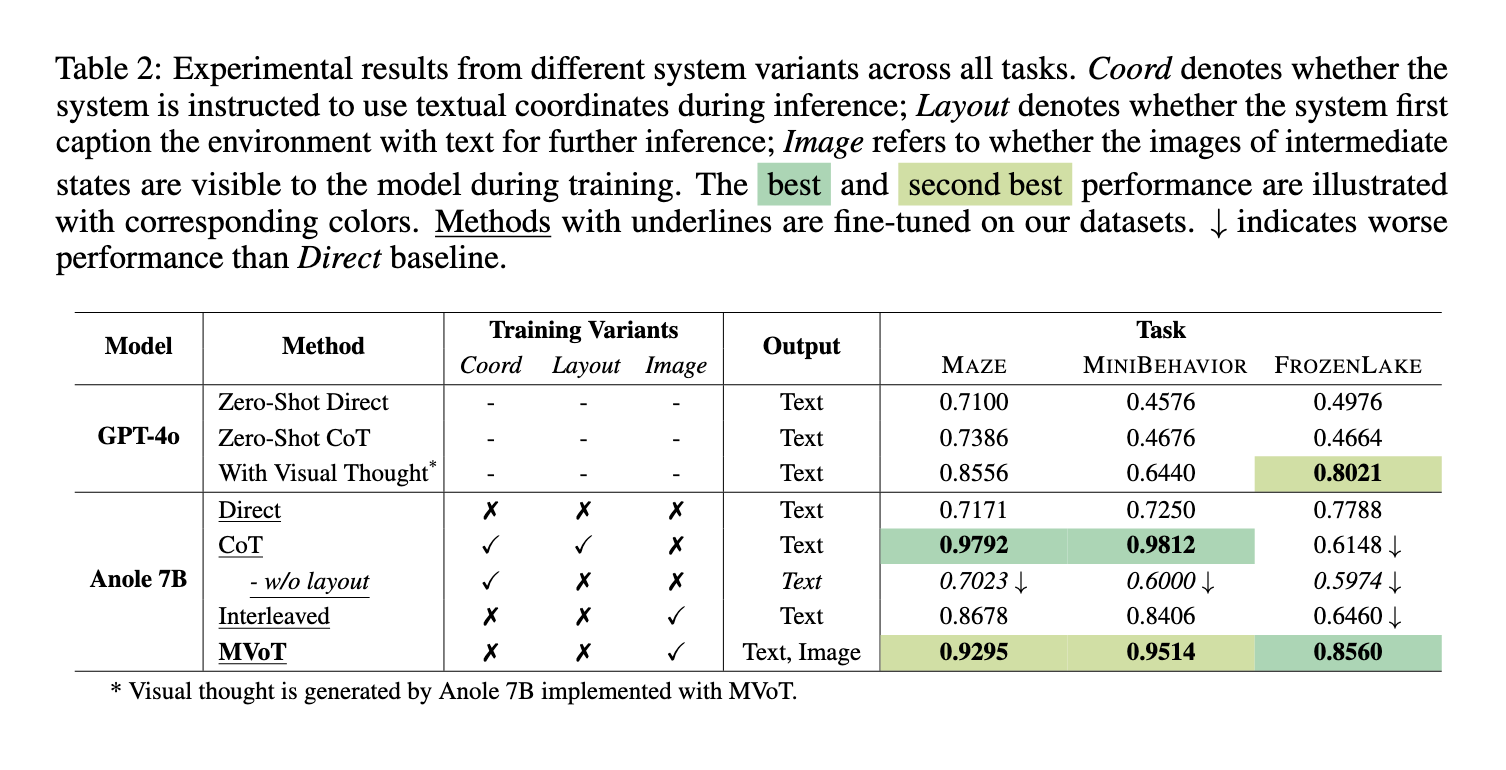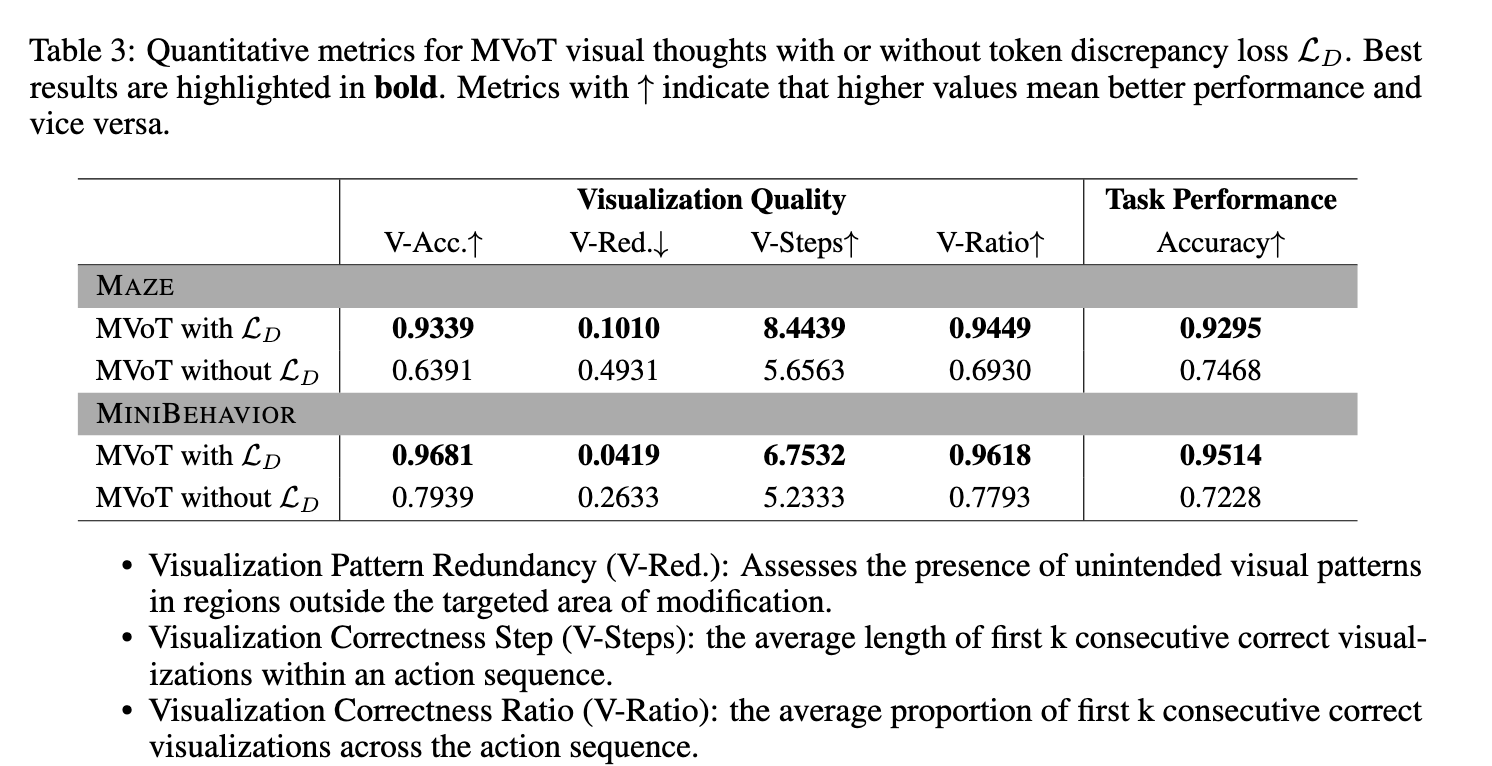The study of artificial intelligence has seen transformative advances in reasoning and understanding complex tasks. The most innovative developments are large language models (LLM) and multimodal large language models (MLLM). These systems can process textual and visual data, allowing them to analyze complex tasks. Unlike traditional approaches that base their reasoning skills on verbal means, multimodal systems attempt to mimic human cognition by combining textual reasoning with visual thinking and could therefore be used more effectively to solve more varied challenges.
The problem so far is that these models cannot interconnect textual and visual reasoning in dynamic environments. Models developed for reasoning work well with text-based or image-based inputs, but cannot run simultaneously when both are input. Spatial reasoning tasks such as navigating through mazes or interpreting dynamic designs show weaknesses in these models. These models cannot include built-in reasoning capabilities. Therefore, it creates limitations on the adaptability and interpretability of the models, especially when the task is to understand and manipulate visual patterns and the instructions given in words.
Various approaches have been proposed to address these issues. Chain of Thought (CoT) prompts improve reasoning by producing step-by-step textual traces. It is inherently text-based and does not handle tasks that require spatial understanding. Other approaches are visual input methods through external tools, such as image captioning or scene graph generation, which allow models to process visual and textual data. While effective to some extent, these methods rely heavily on separate visual modules, making them less flexible and prone to errors in complex tasks.
Researchers from Microsoft Research, the University of Cambridge, and the Chinese Academy of Sciences introduced the Multimodal Visualization of Thinking (MVoT) framework to address these limitations. This novel reasoning paradigm allows models to generate visual reasoning traces interspersed with verbal traces, offering an integrated approach to multimodal reasoning. MVoT embeds visual thinking capabilities directly into the model architecture, thereby eliminating dependency on external tools, making it a more coherent solution for complex reasoning tasks.

Using Chameleon-7B, an autoregressive MLLM optimized for multimodal reasoning tasks, the researchers implemented MVoT. This method involves token mismatch loss to bridge the representation gap between text and image tokenization processes to generate quality images. MVoT processes multimodal inputs step by step by creating verbal and visual reasoning traces. For example, in spatial tasks such as maze navigation, the model produces intermediate visualizations corresponding to reasoning steps, improving both its interpretability and performance. This native visual reasoning capability, built into the framework, makes it more similar to human cognition, thus providing a more intuitive approach to understanding and solving complex tasks.
MVoT outperformed state-of-the-art models in extensive experiments on multiple spatial reasoning tasks, including MAZE, MINI BEHAVIOR, and FROZEN LAKE. The framework achieved a high accuracy of 92.95% in maze navigation tasks, which outperforms traditional CoT methods. In the MINI BEHAVIOR task that requires understanding interaction with spatial layouts, MVoT achieved an accuracy of 95.14%, demonstrating its applicability in dynamic environments. On the FROZEN LAKE task, which is known to be complex due to fine spatial details, the robustness of MVoT reached an accuracy of 85.60%, outperforming CoT and other baselines. MVoT consistently improved in challenging scenarios, especially those involving complex visual patterns and spatial reasoning.

In addition to performance metrics, MVoT showed better interpretability by generating visual thought traces that complement verbal reasoning. This capability allowed users to visually follow the model's reasoning process, making it easier to understand and verify its conclusions. Unlike CoT, which relies solely on textual description, MVoT's multimodal reasoning approach reduced errors caused by poor textual representation. For example, in the FROZEN LAKE task, MVoT maintained stable performance with increased complexity relative to its environment, thus demonstrating robustness and reliability.

Therefore, this study redefines the scope of ai reasoning capabilities with MVoT by integrating text and vision into reasoning tasks. Using token mismatch loss ensures that visual reasoning aligns perfectly with textual processing. This will close the critical gap in current methods. Superior performance and better interpretability will mark MVoT as a landmark step toward multimodal reasoning that can open doors to more complex and challenging ai systems in real-world scenarios.
Verify he Paper. All credit for this research goes to the researchers of this project. Also, don't forget to follow us on <a target="_blank" href="https://x.com/intent/follow?screen_name=marktechpost” target=”_blank” rel=”noreferrer noopener”>twitter and join our Telegram channel and LinkedIn Grabove. Don't forget to join our SubReddit over 65,000 ml.
Recommend open source platform: Parlant is a framework that transforms the way ai agents make decisions in customer-facing scenarios. (Promoted)
Nikhil is an internal consultant at Marktechpost. He is pursuing an integrated double degree in Materials at the Indian Institute of technology Kharagpur. Nikhil is an ai/ML enthusiast who is always researching applications in fields like biomaterials and biomedical science. With a strong background in materials science, he is exploring new advances and creating opportunities to contribute.






